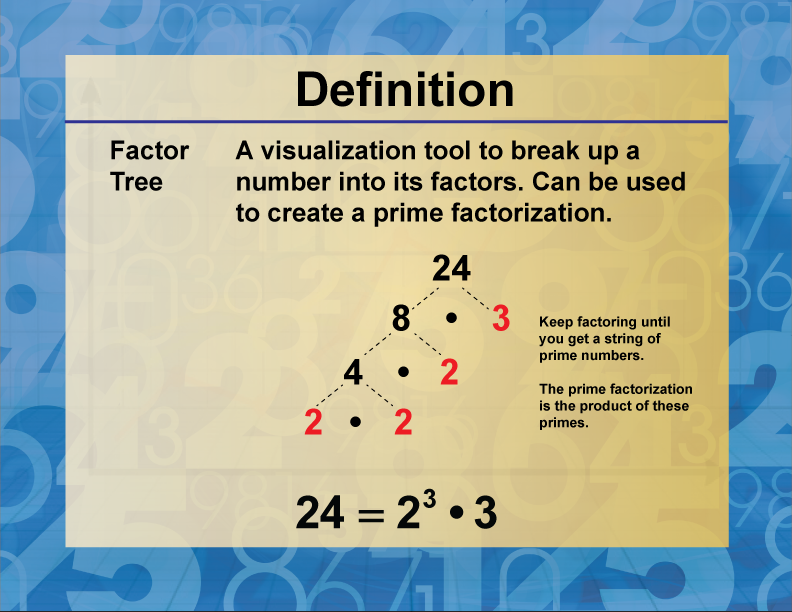
Display Title
Definition--Factors and Multiples--Factor Tree
Display Title
Factor Tree

Topic
Factors and Multiples
Definition
A factor tree is a graphical method used to break down a number into its prime factors.
Description
A factor tree is a visual representation that helps in identifying the prime factors of a given number. It starts with the original number at the top and branches downwards, breaking the number into its factors until all the branches end in prime numbers. This method is particularly useful in understanding the concept of prime factorization, which is the process of expressing a number as the product of its prime factors.
For example, consider the number 24. The factor tree for 24 would start with 24 at the top. You can break it down into 4 and 6. Further breaking down, 4 becomes 2 and 2 (both primes), and 6 becomes 2 and 3 (both primes). Thus, the prime factorization of 24 is 2 × 2 × 2 × 3.
Factor trees are essential in various mathematical applications, such as simplifying fractions, finding the greatest common divisor (GCD), and the least common multiple (LCM). Understanding how to construct and interpret factor trees enhances a student's ability to work with numbers more efficiently and lays a strong foundation for more advanced mathematical concepts.
For a complete collection of terms related to factors and multiples click on this link: Factors and Multiples Collection.
| Common Core Standards | CCSS.MATH.CONTENT.3.OA.B.6, CCSS.MATH.CONTENT.4.OA.B.4, CCSS.MATH.CONTENT.6.NS.B.4, CCSS.MATH.CONTENT.HSA.SSE.A.1, CCSS.MATH.CONTENT.3.NBT.A.3, CCSS.MATH.CONTENT.4.NF.B.4.A |
|---|---|
| Grade Range | 3 - 8 |
| Curriculum Nodes |
Algebra • The Language of Math • Numerical Expressions |
| Copyright Year | 2021 |
| Keywords | multiples, factors, definitions, glossary term, factor |